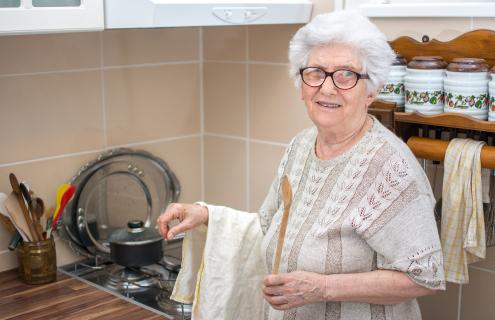
When a loved one lives with Alzheimer’s disease, home safety becomes increasingly important—and ever more complex. The Alzheimer’s Association recommends these safety tips:
Evaluate your environment. Pay special attention to garages, work rooms, basements and outside areas where there are more likely to be tools, chemicals, cleaning supplies, and other items that may require removal or to be secured.
Keep walkways well-lit and remove tripping hazards. Use night lights in hallways, bedrooms, and bathrooms. Keep floors and other surfaces clutter-free. Remove objects such as magazine racks, coffee tables, and floor lamps.
Avoid safety hazards in the kitchen. Install a hidden gas valve or circuit breaker on the stove so a person with dementia cannot turn it on. Consider removing the knobs. Use appliances that have an auto shut-off feature and keep them away from water sources. Remove decorative fruits, sugar substitutes, and seasonings from the table and counters.
Make sure safety devices are in working order and be prepared for emergencies. Have working fire extinguishers, smoke detectors, and carbon monoxide detectors. Keep a list of emergency contacts for local police and fire departments, hospitals and poison control helplines.
Install locks out of sight. Place deadbolts either high or low on exterior doors to make it difficult for the person to wander out of the house. Keep an extra set of keys hidden near the door for easy access. Remove locks in bathrooms or bedrooms so the person cannot get locked inside.
Remove and disable guns or other weapons. The presence of a weapon in the home of a person with dementia may lead to unexpected danger.
Place medications in a locked drawer or cabinet. To help ensure that medications are taken safely, use a pill box organizer or keep a daily list and check off each medication as it is taken.
Watch the temperature of water and food. It may be difficult for the person with dementia to tell the difference between hot and cold. Consider installing an automatic thermometer for water temperature.
Avoid injury in the bathroom. Install walk-in showers. Add grab bars to the shower or tub and at the edge of the vanity. Add textured stickers to slippery surfaces. Apply adhesives to keep throw rugs in place, or remove rugs completely.